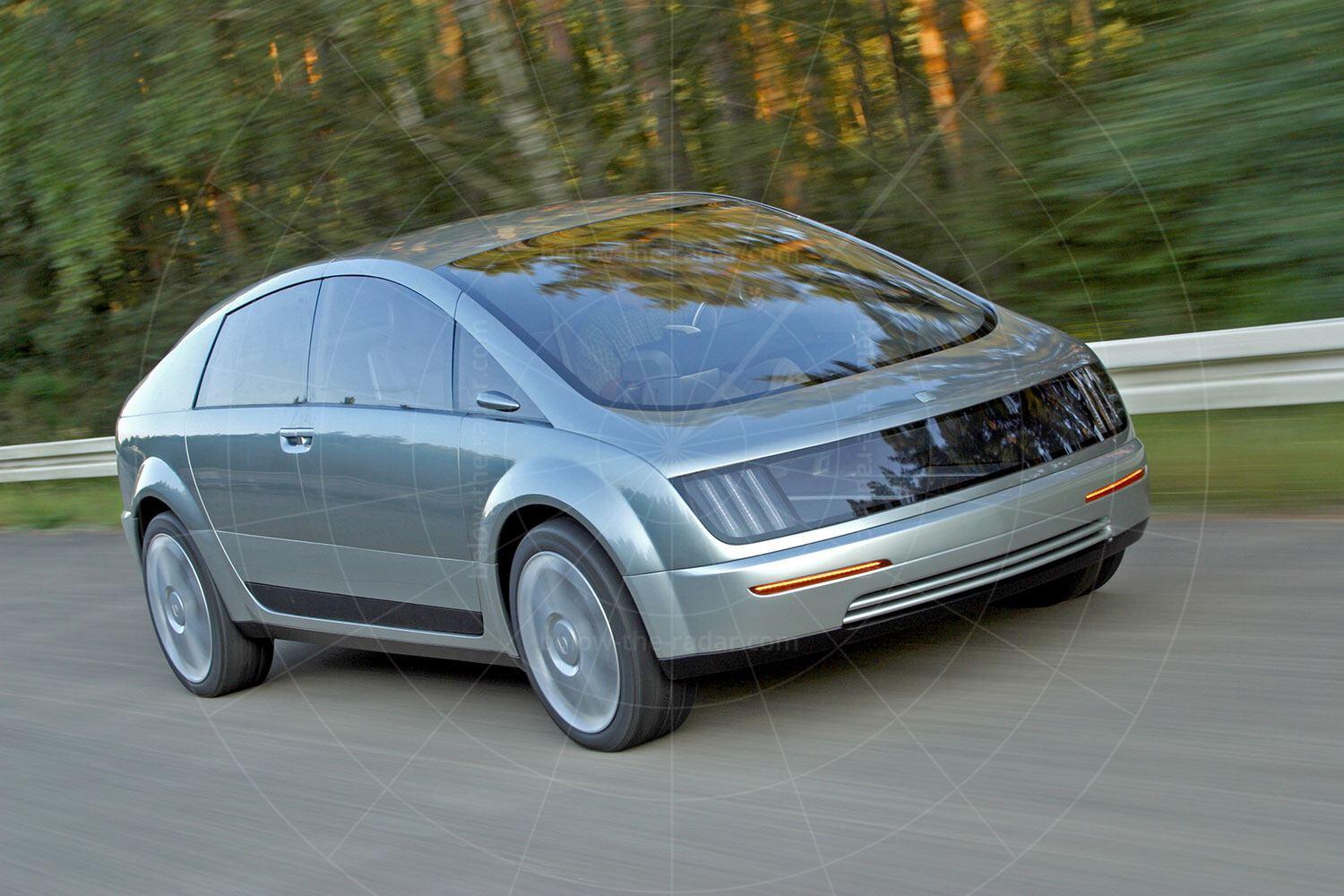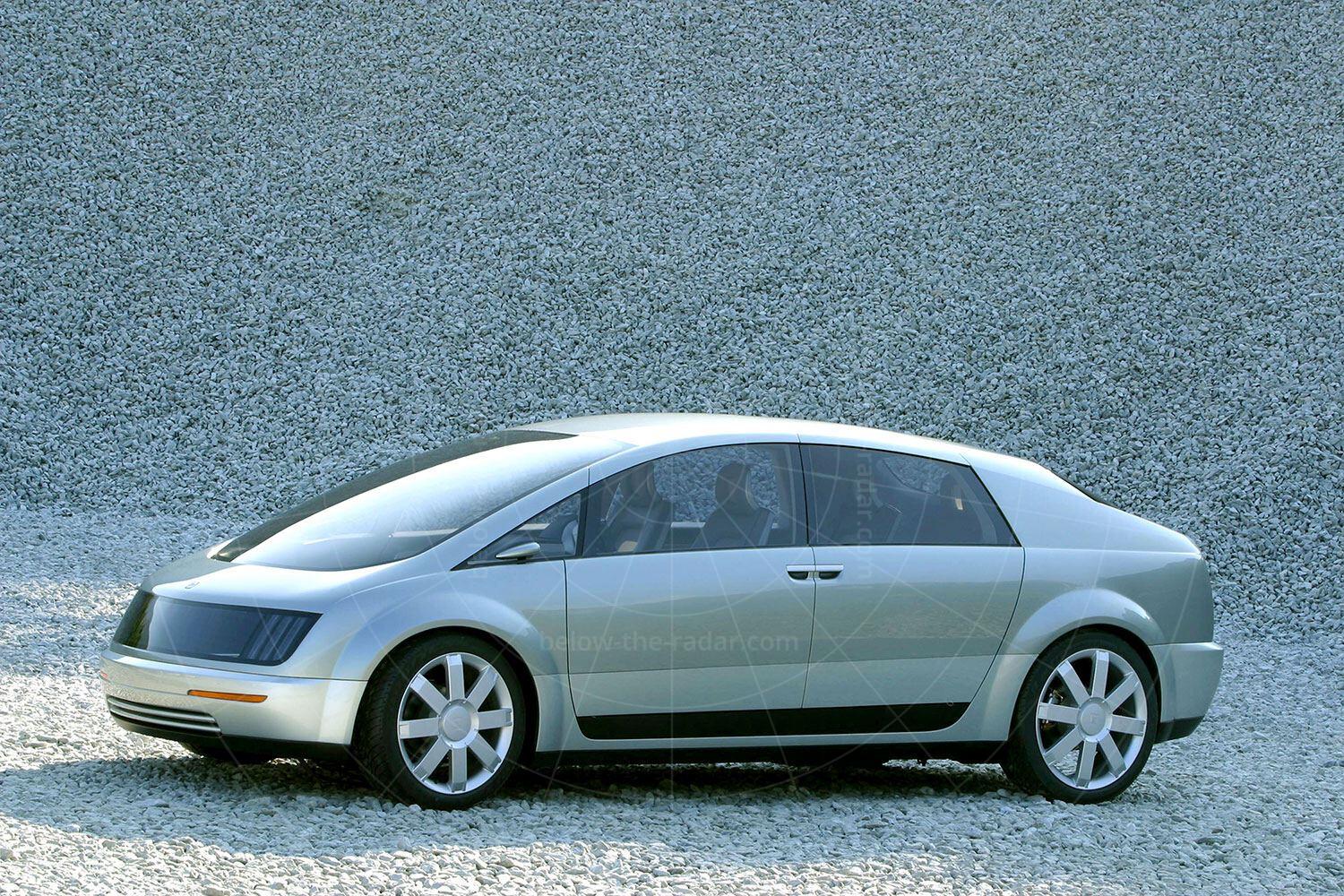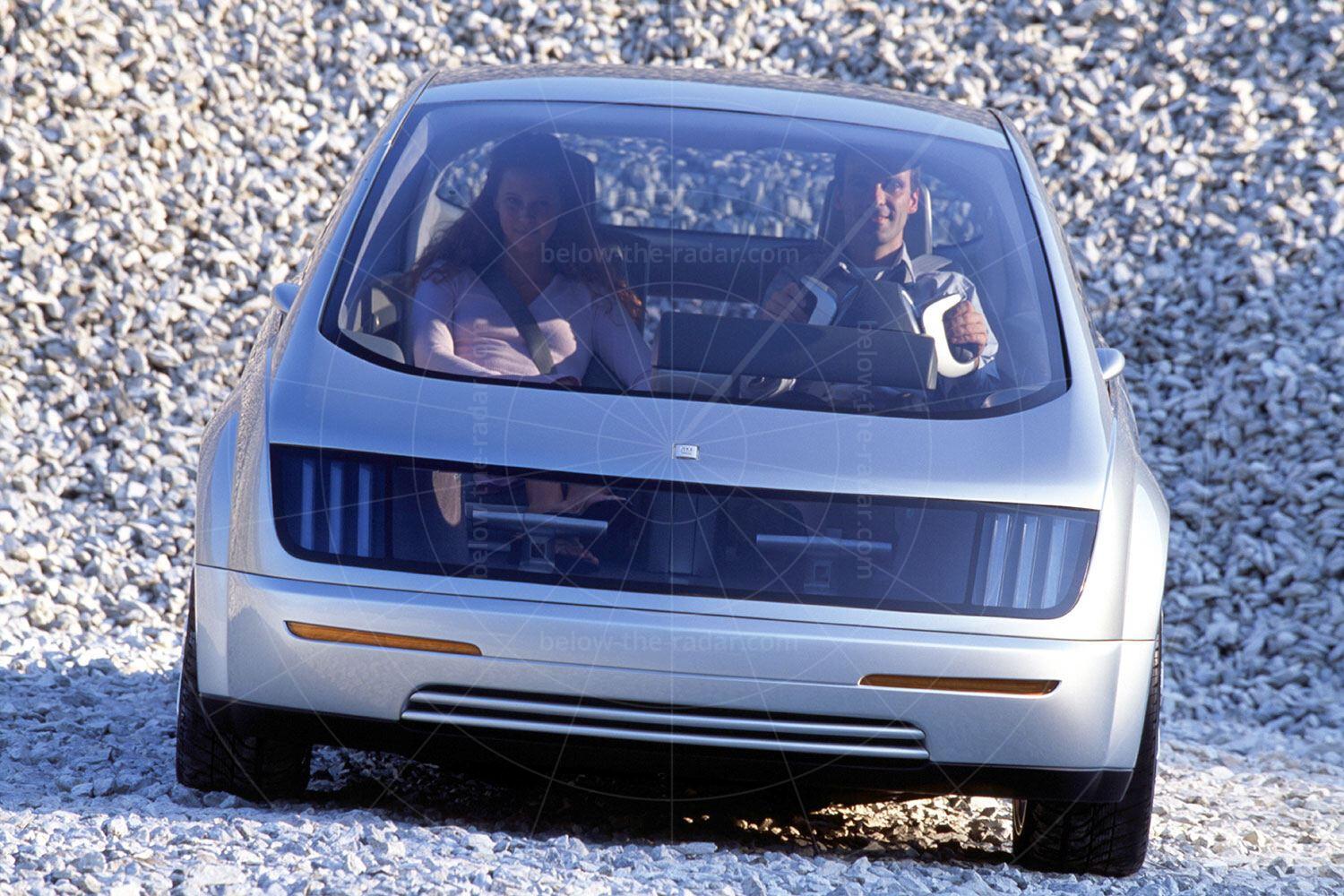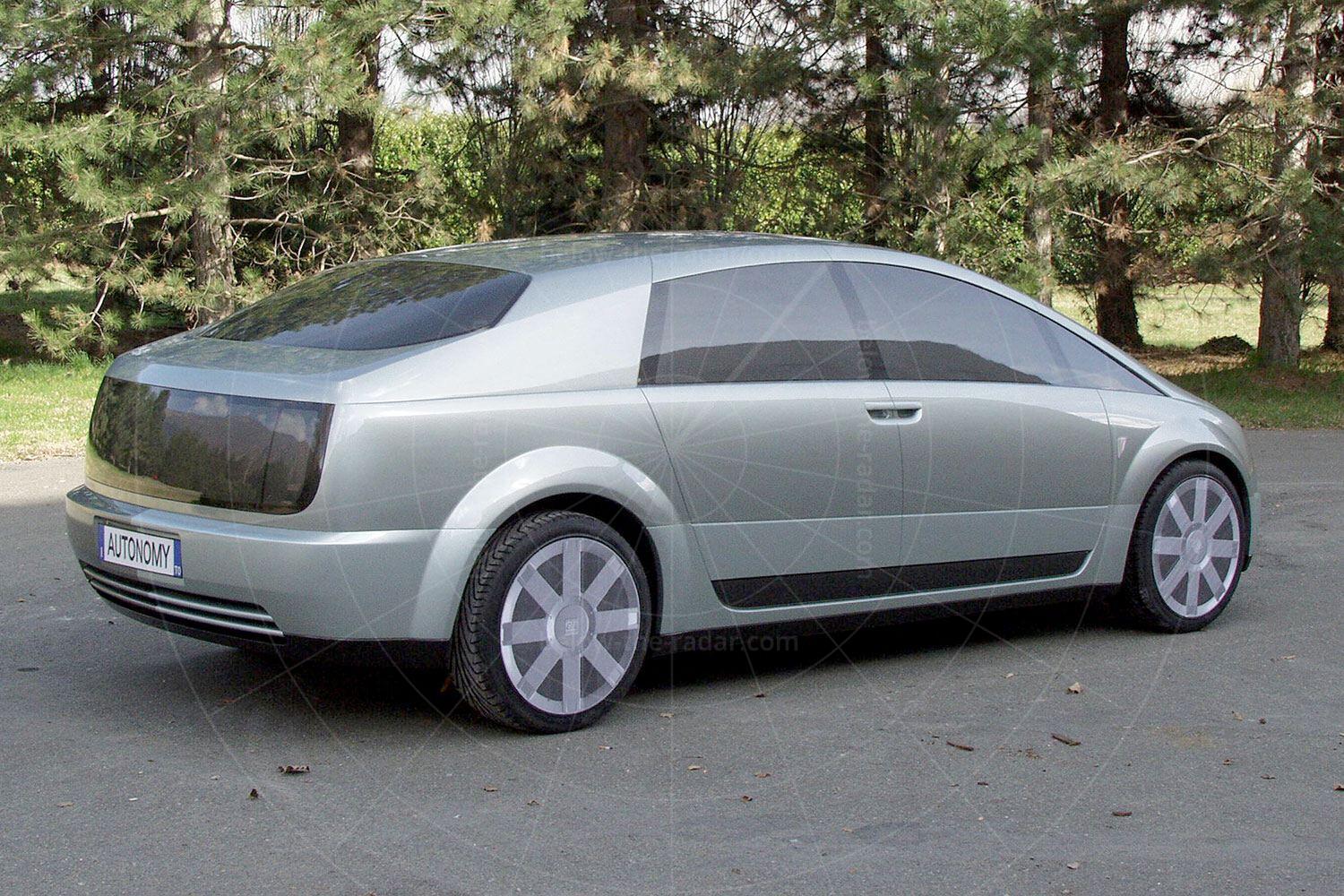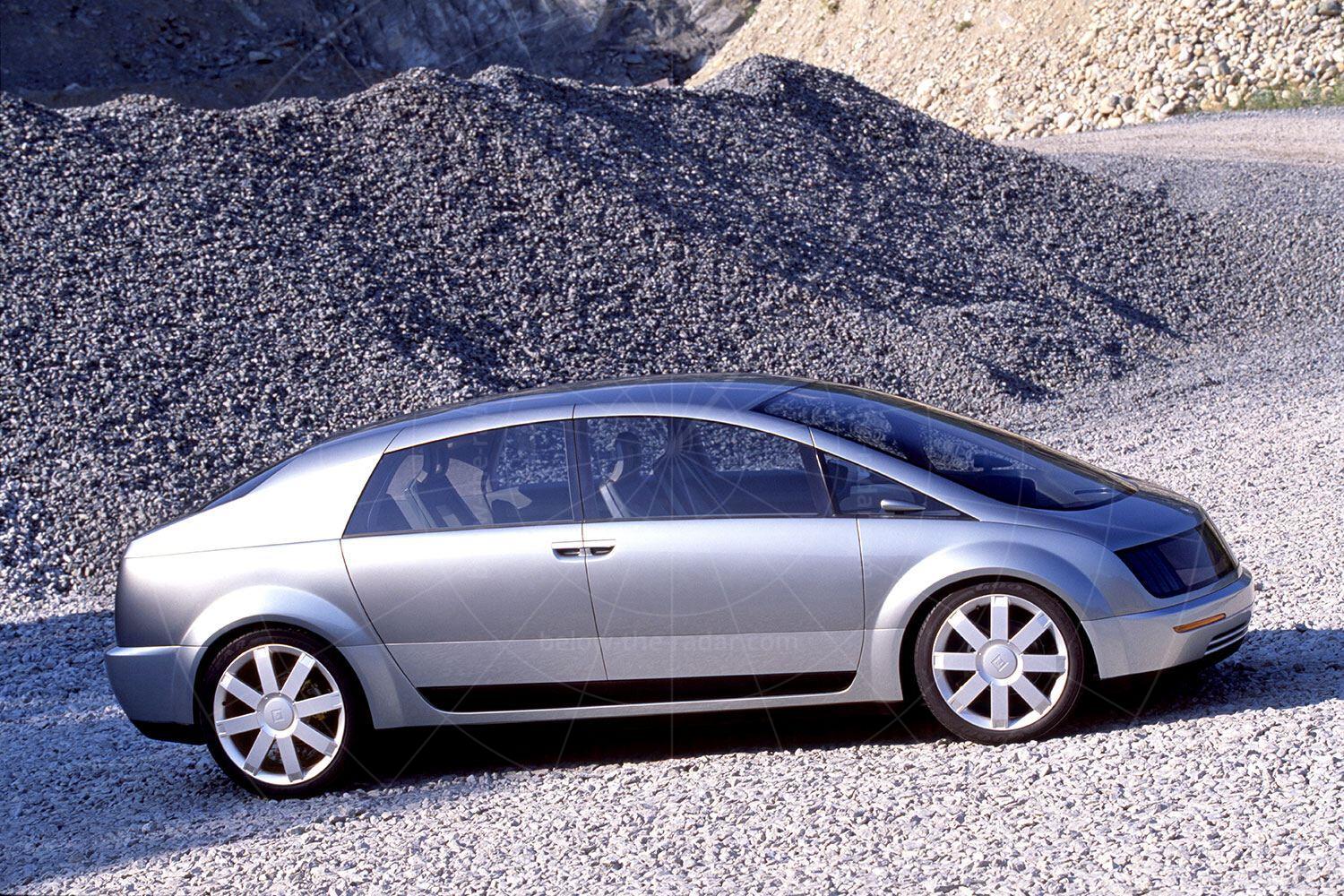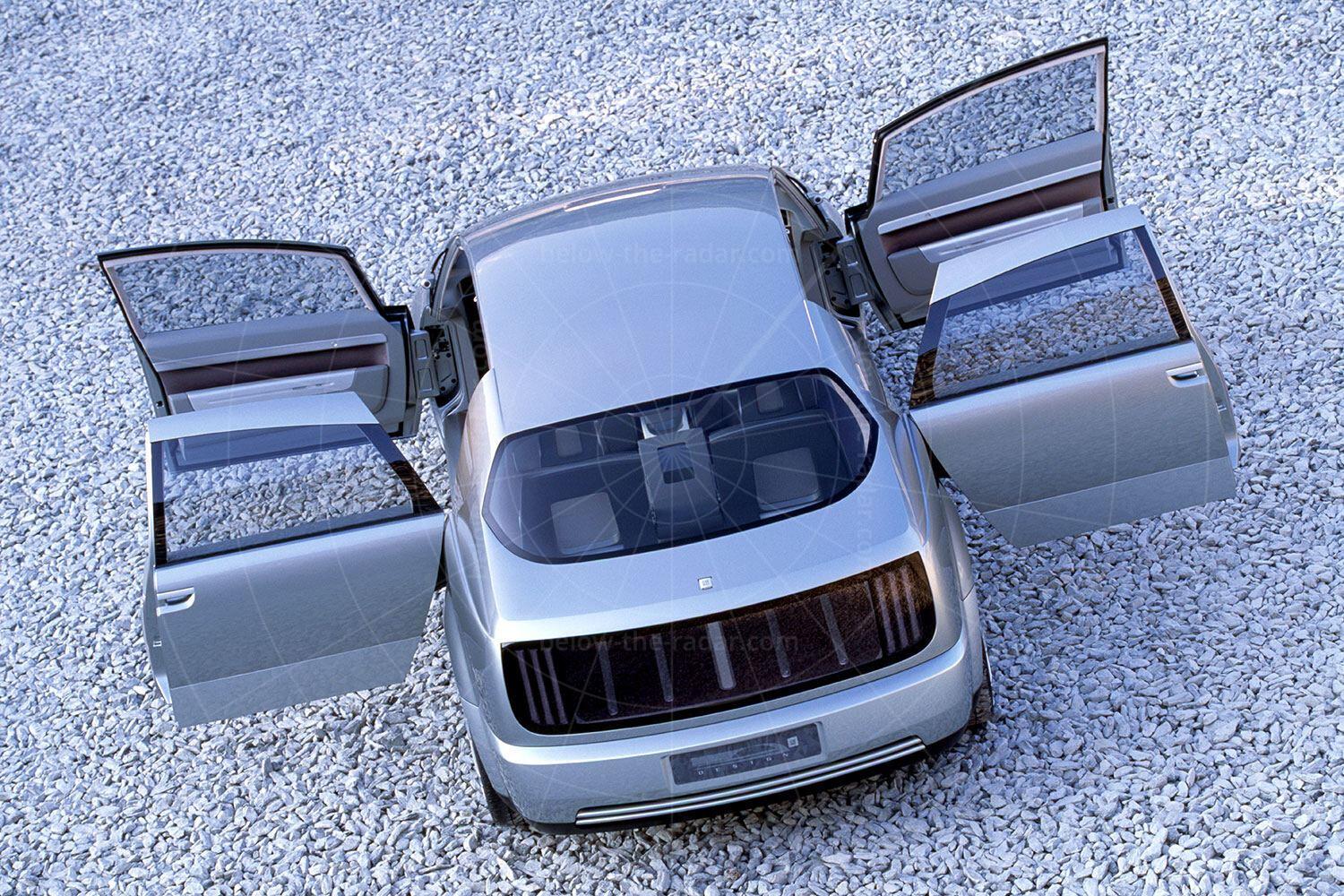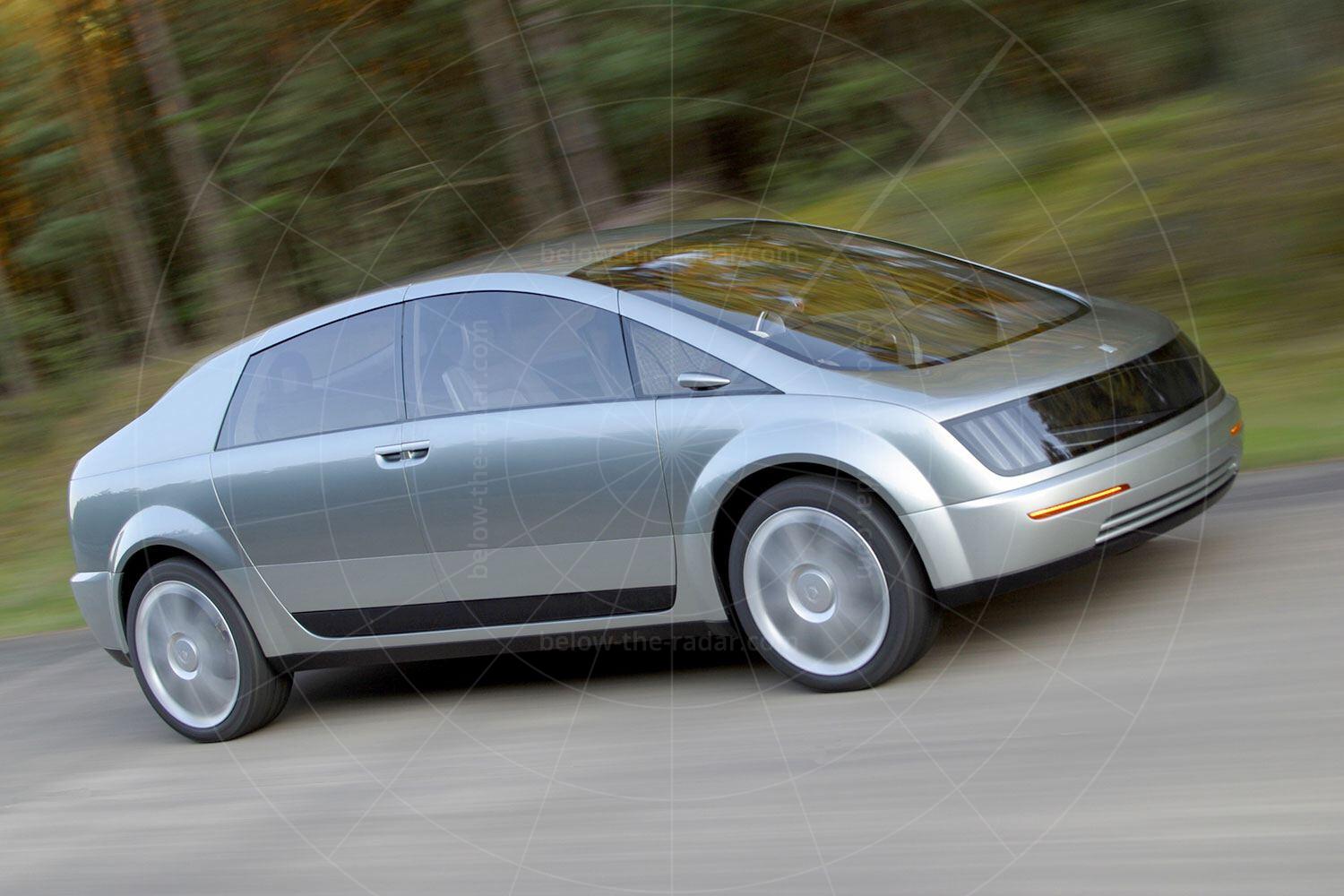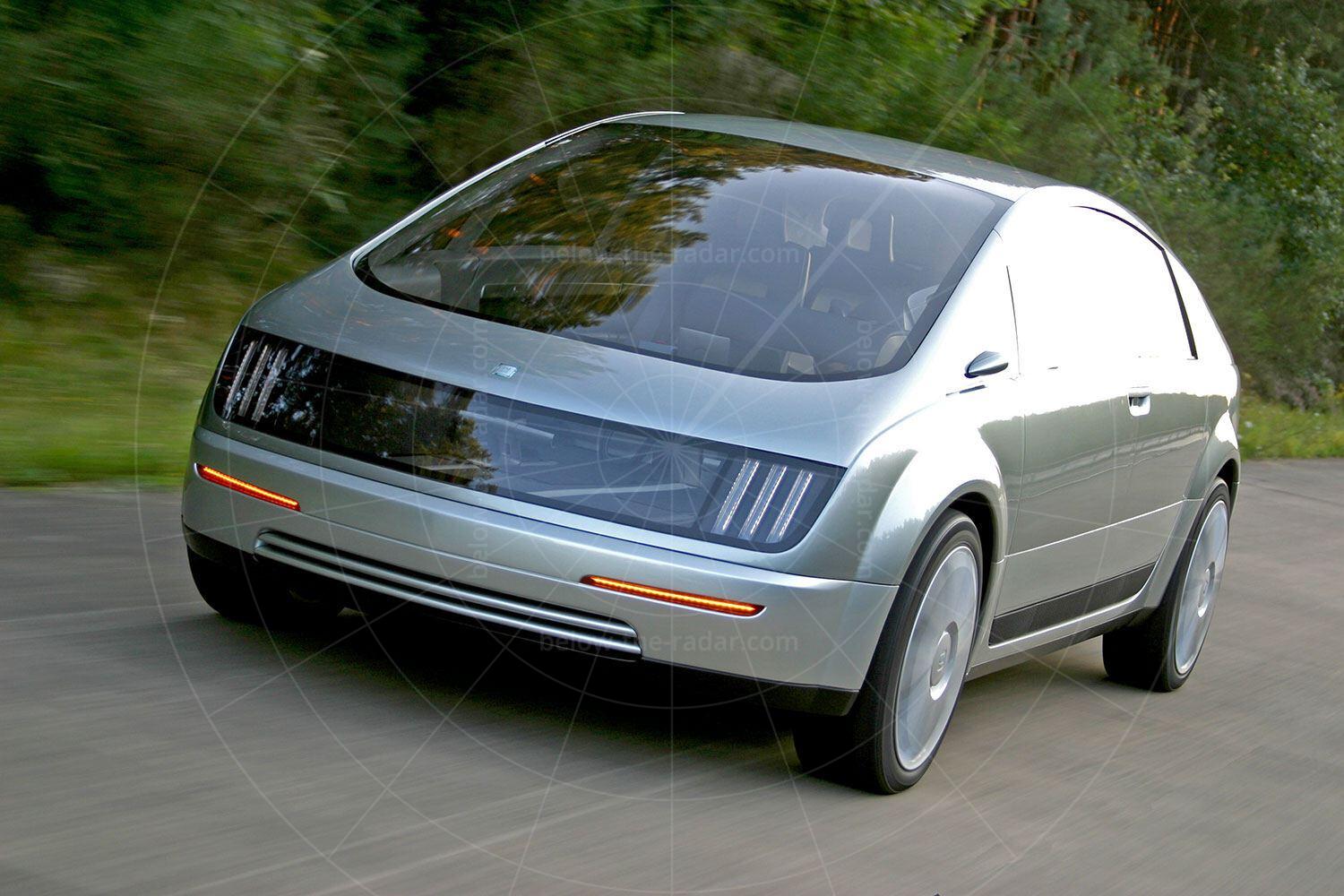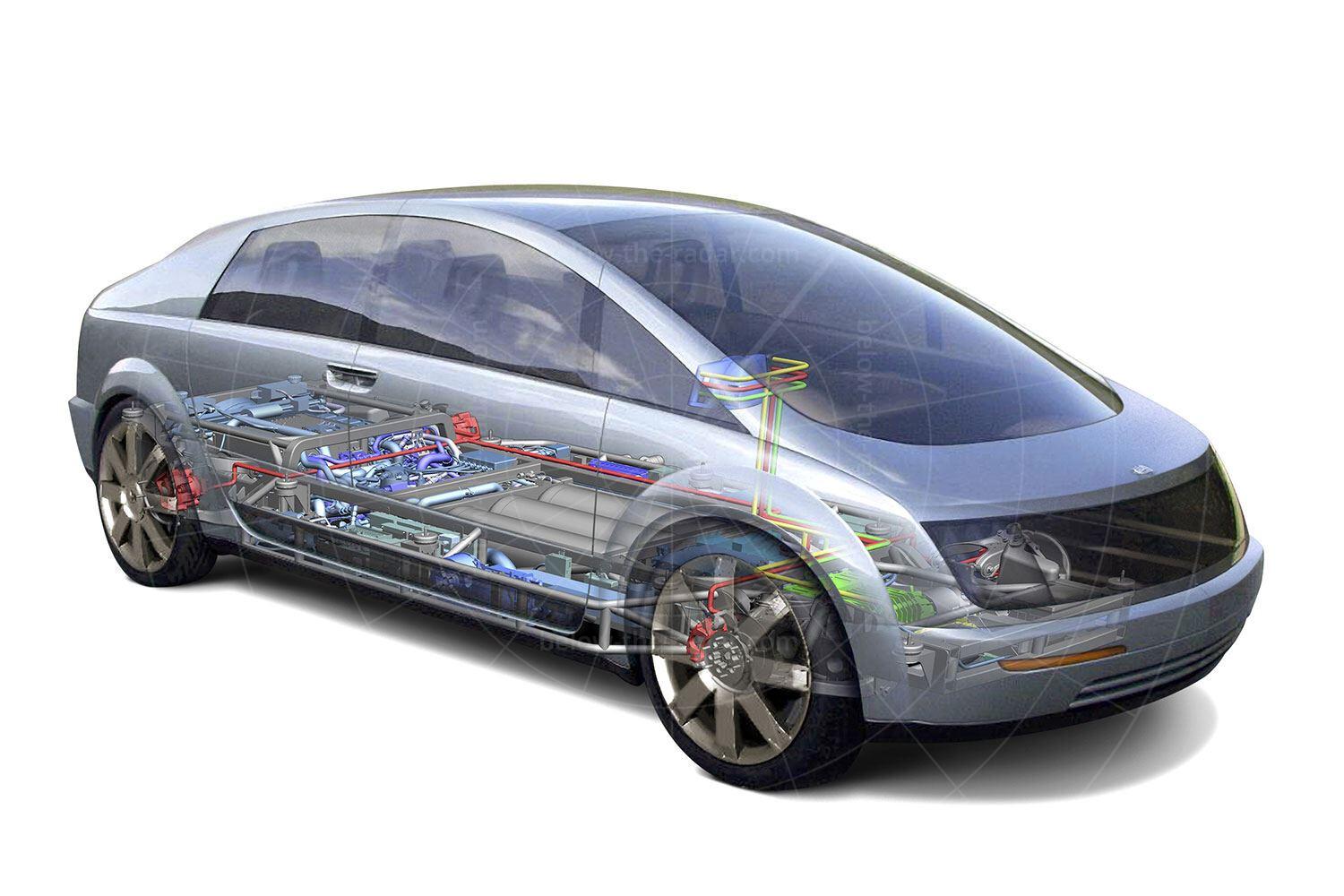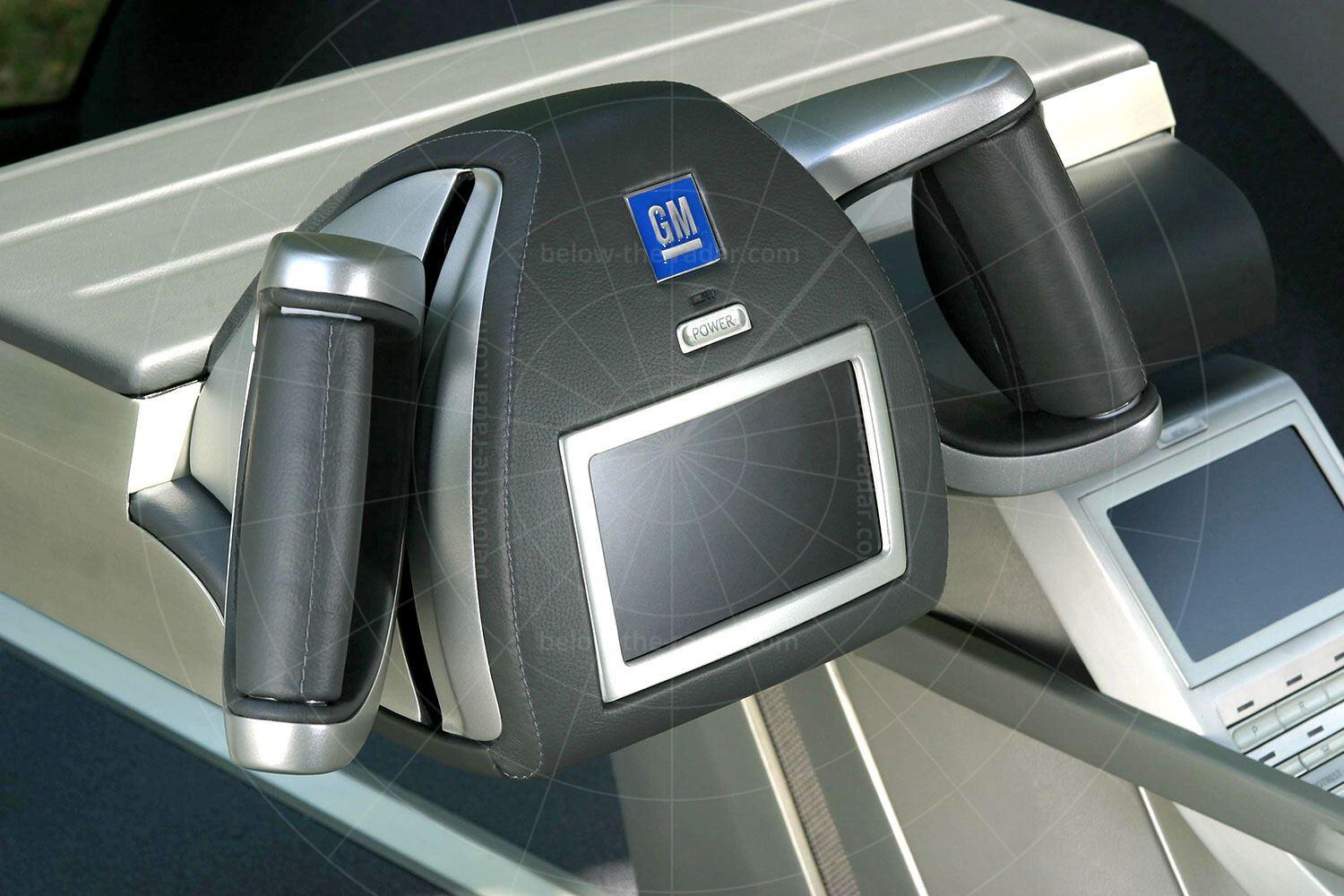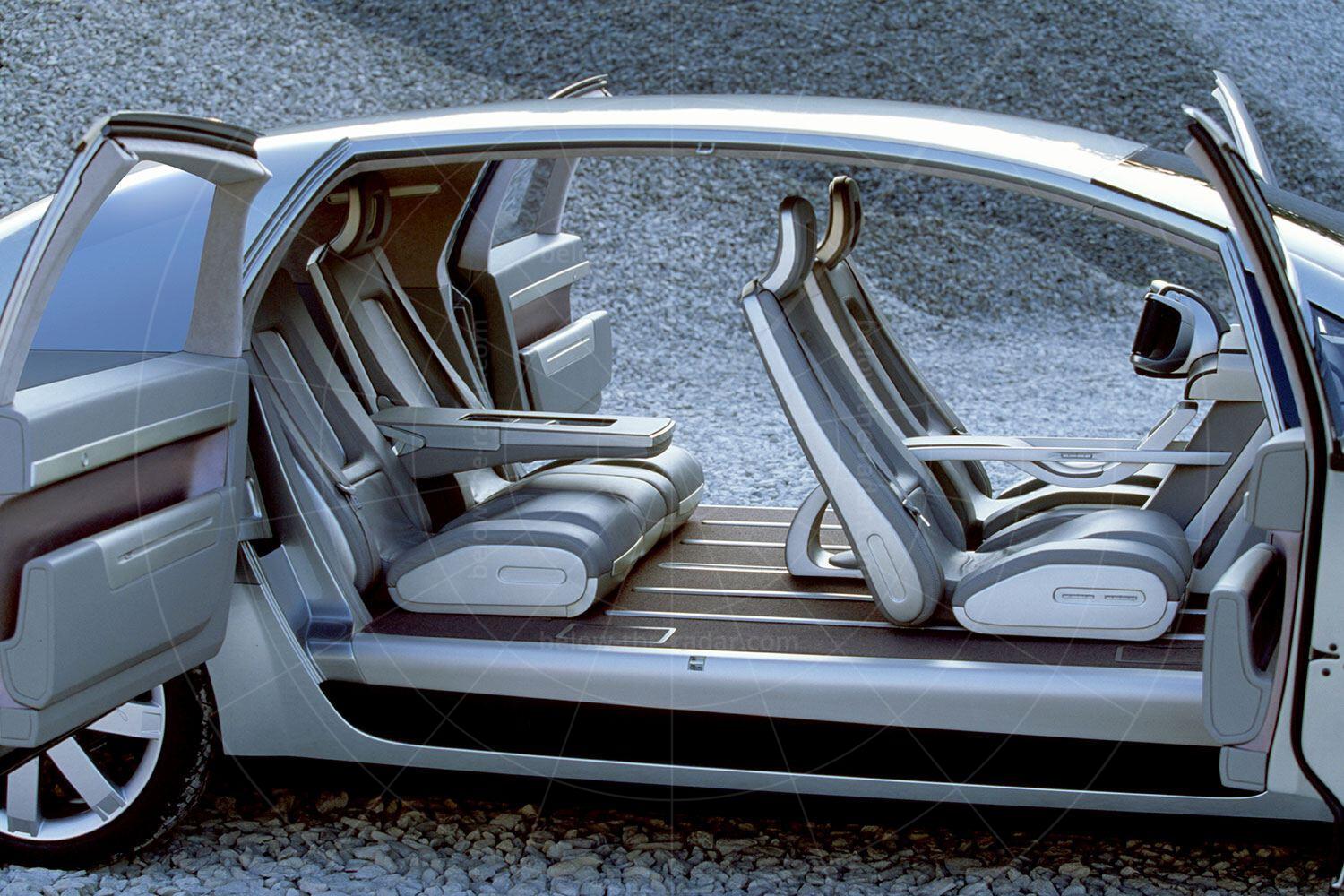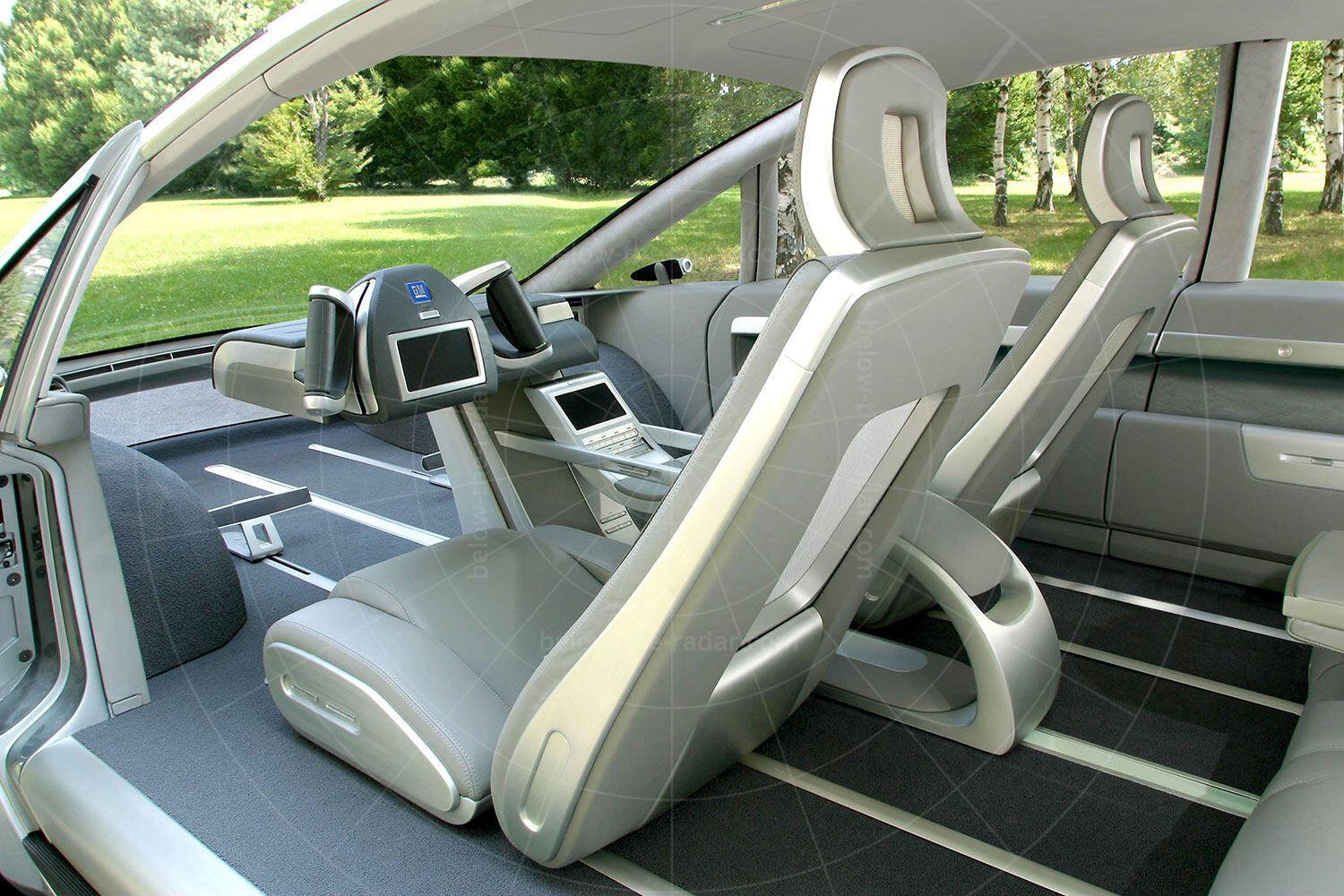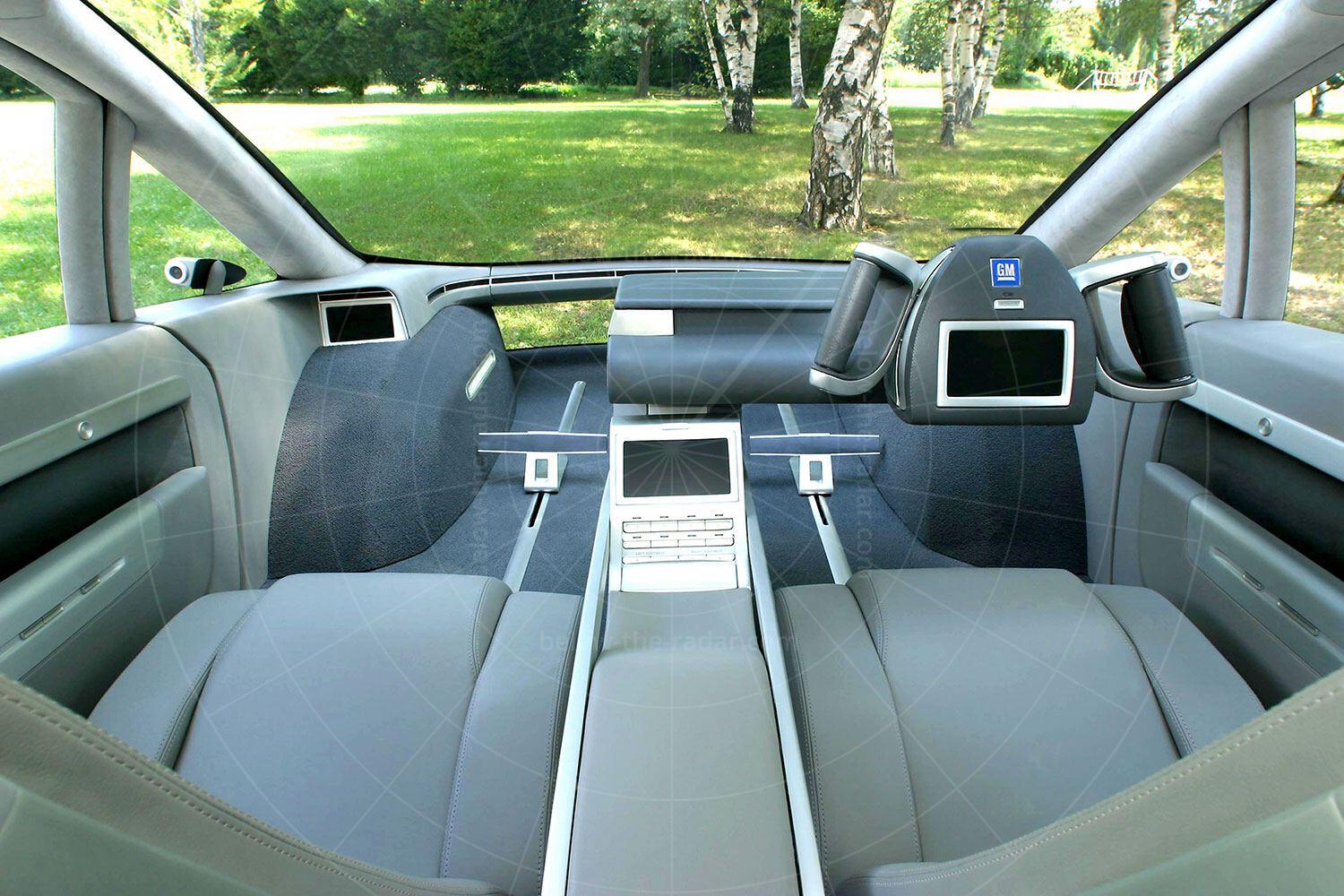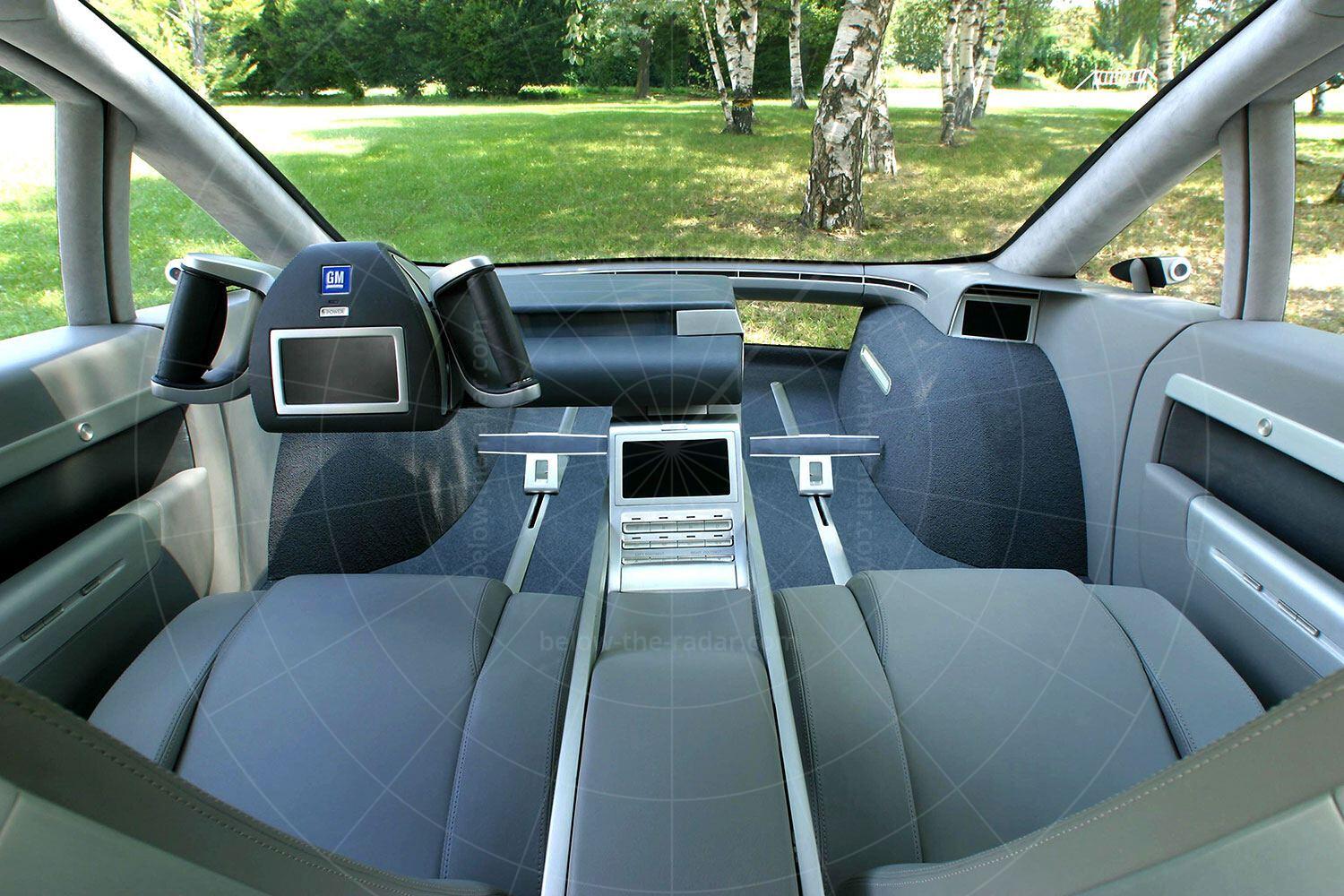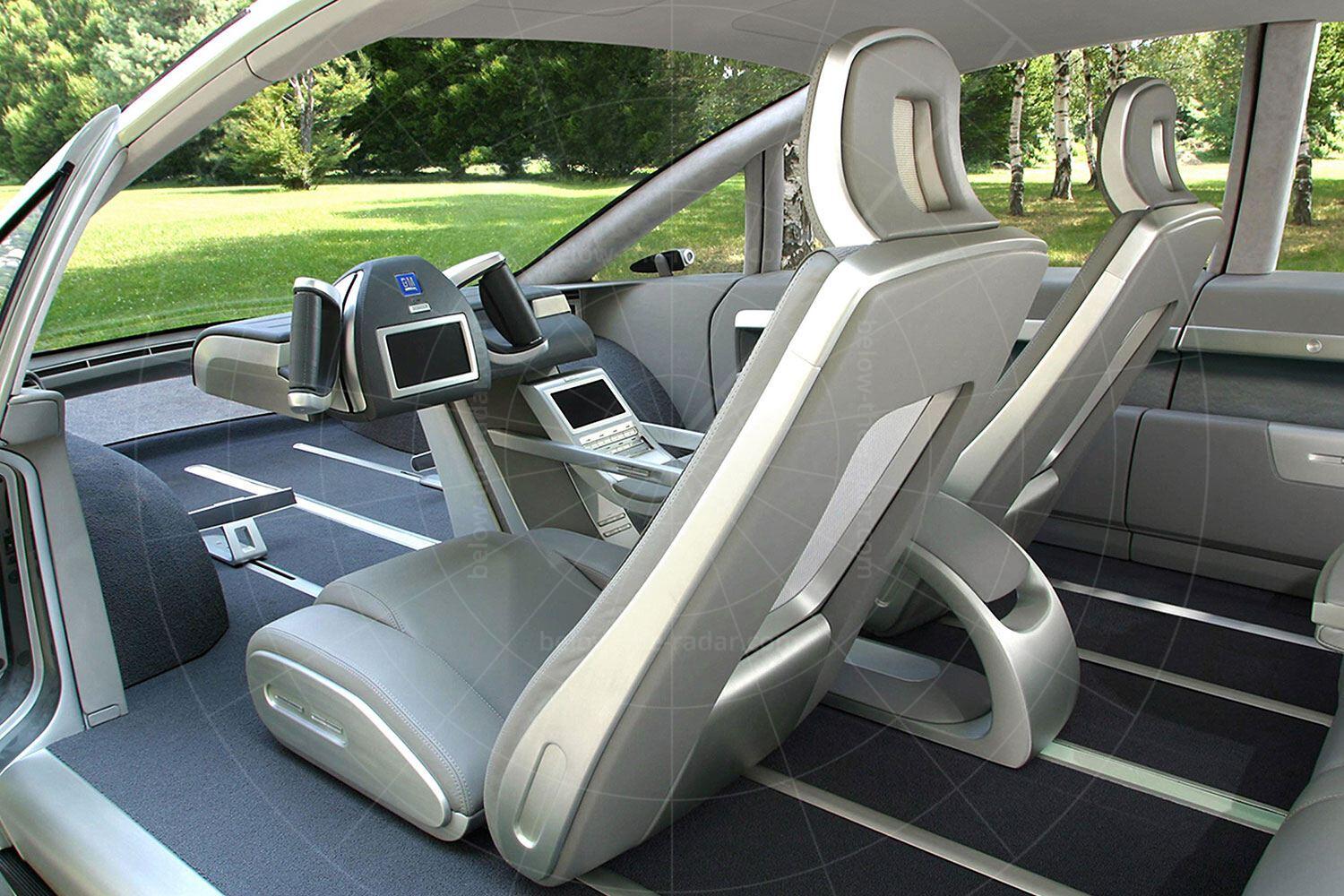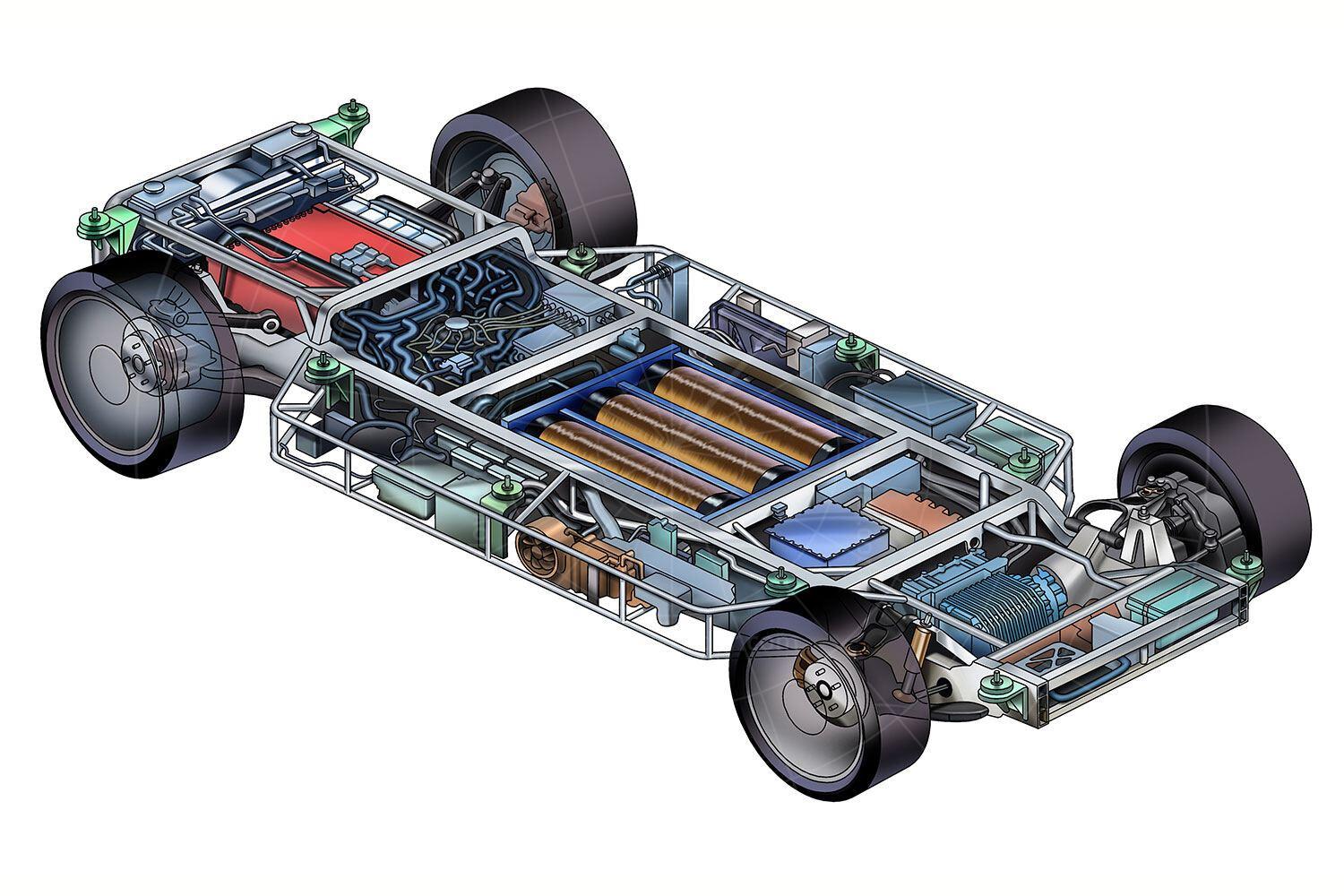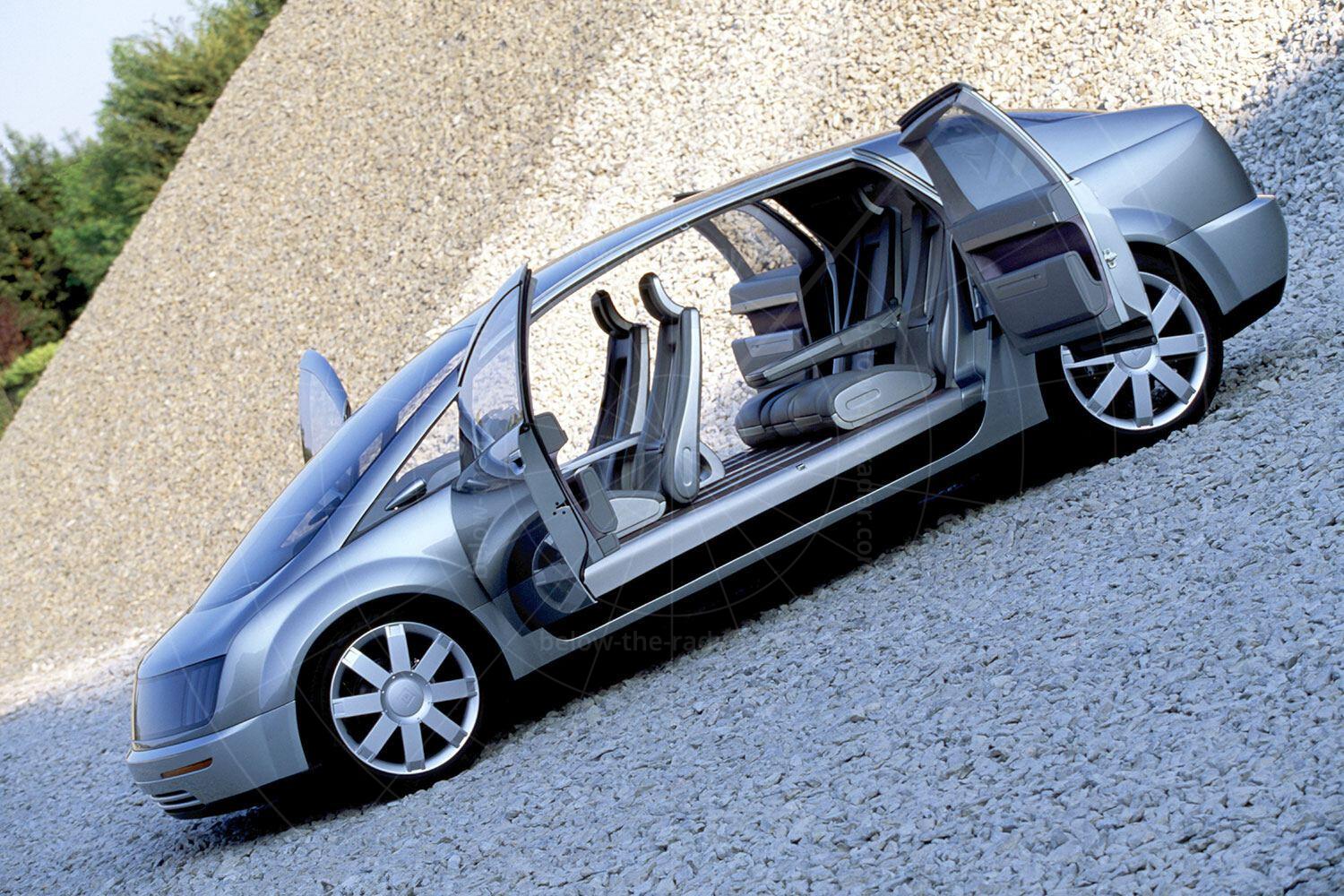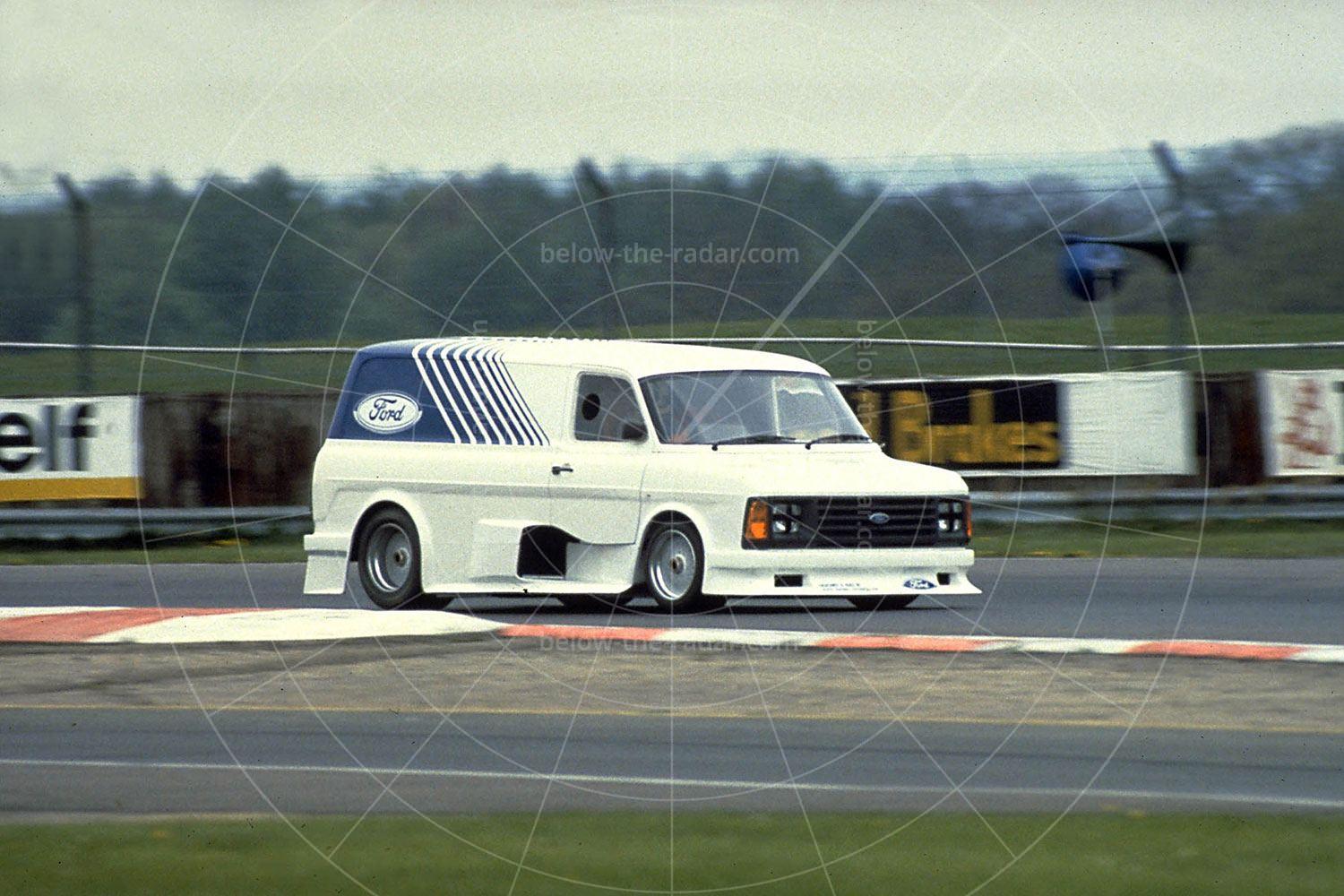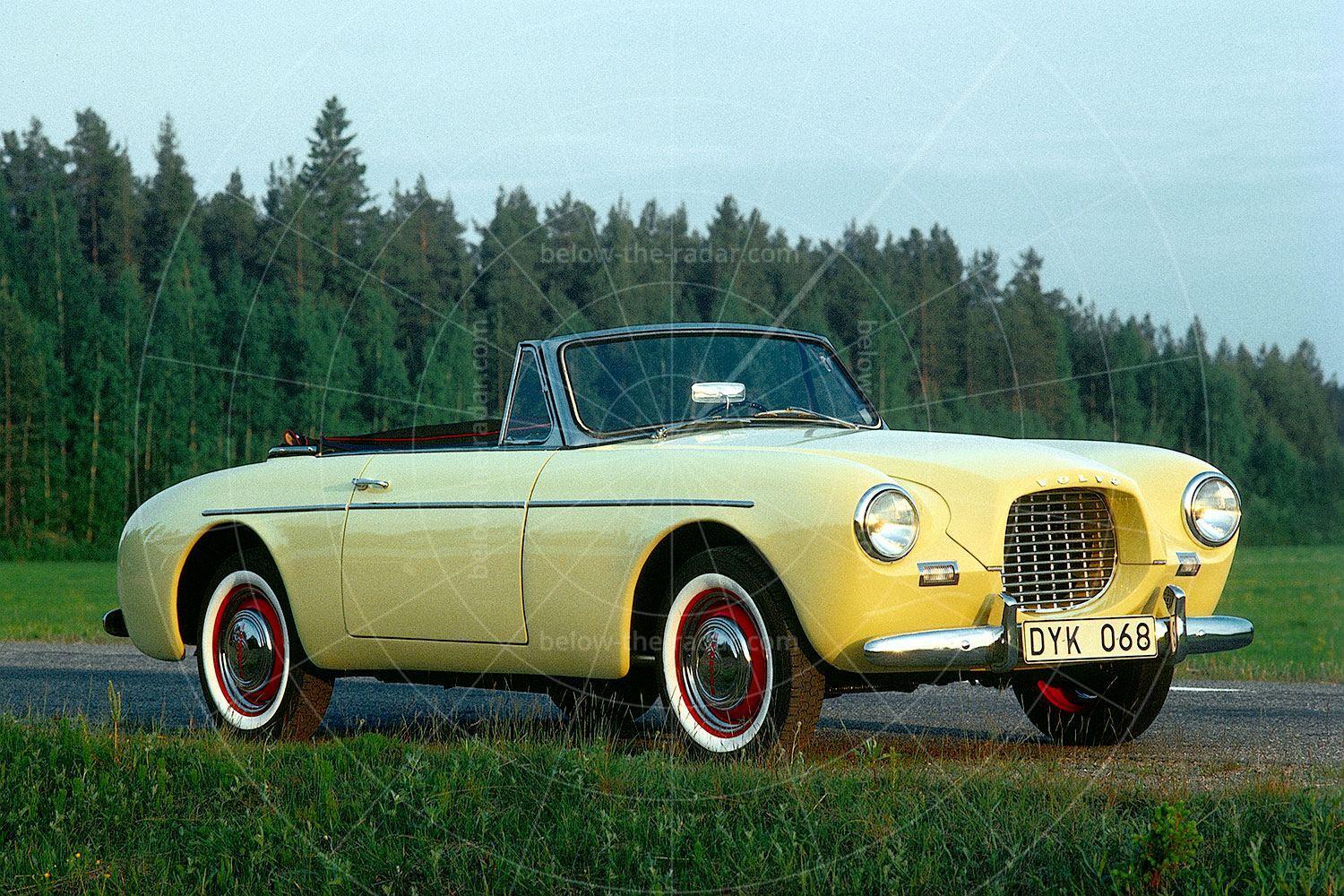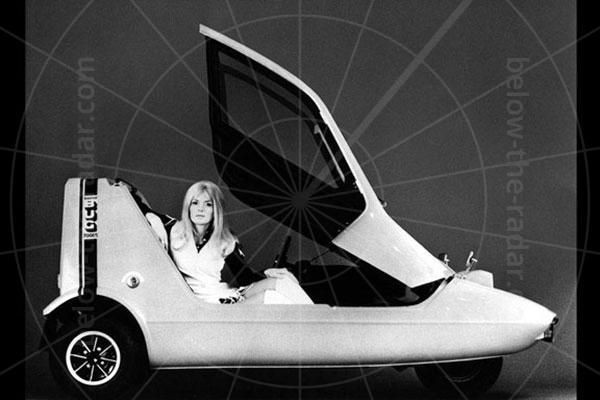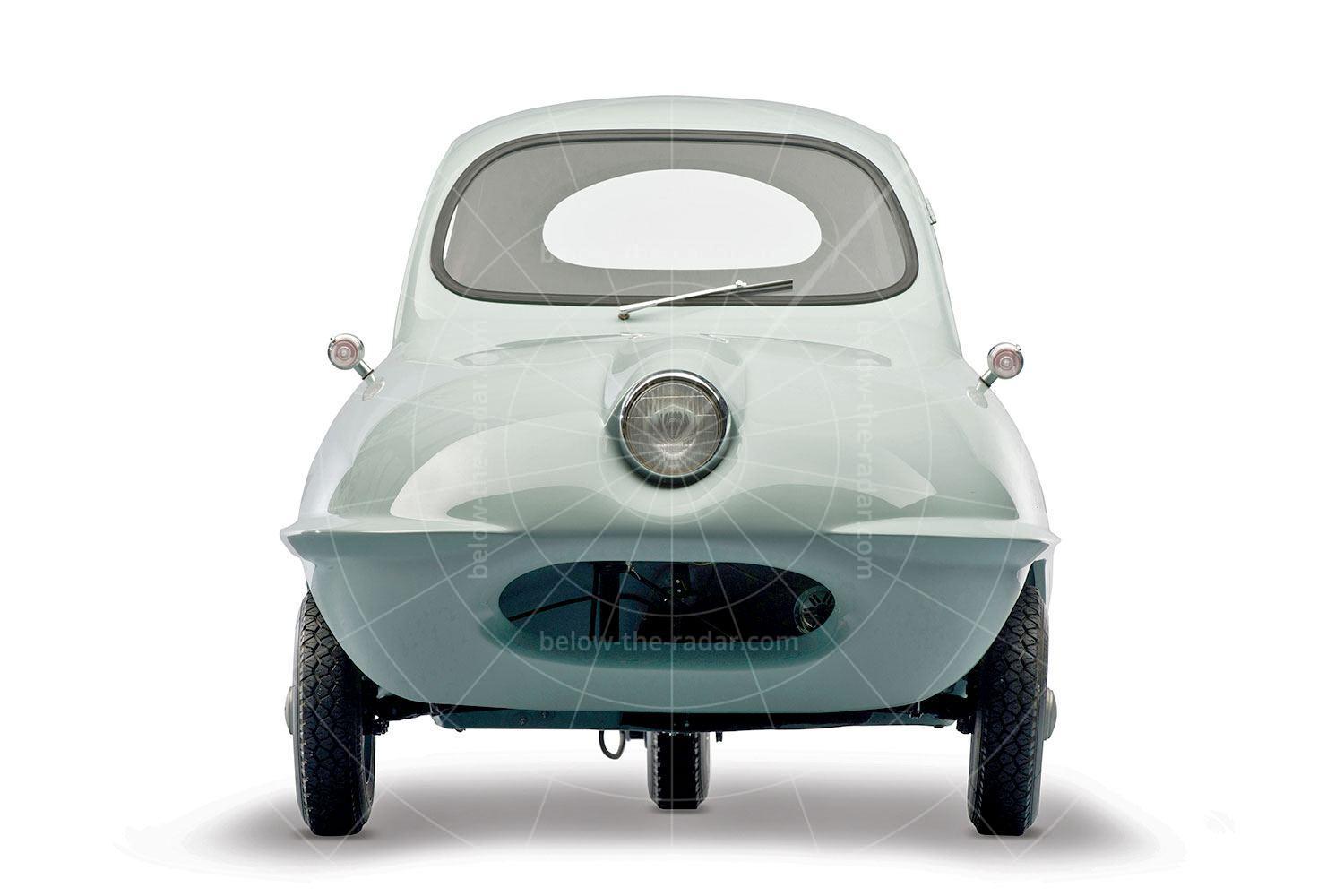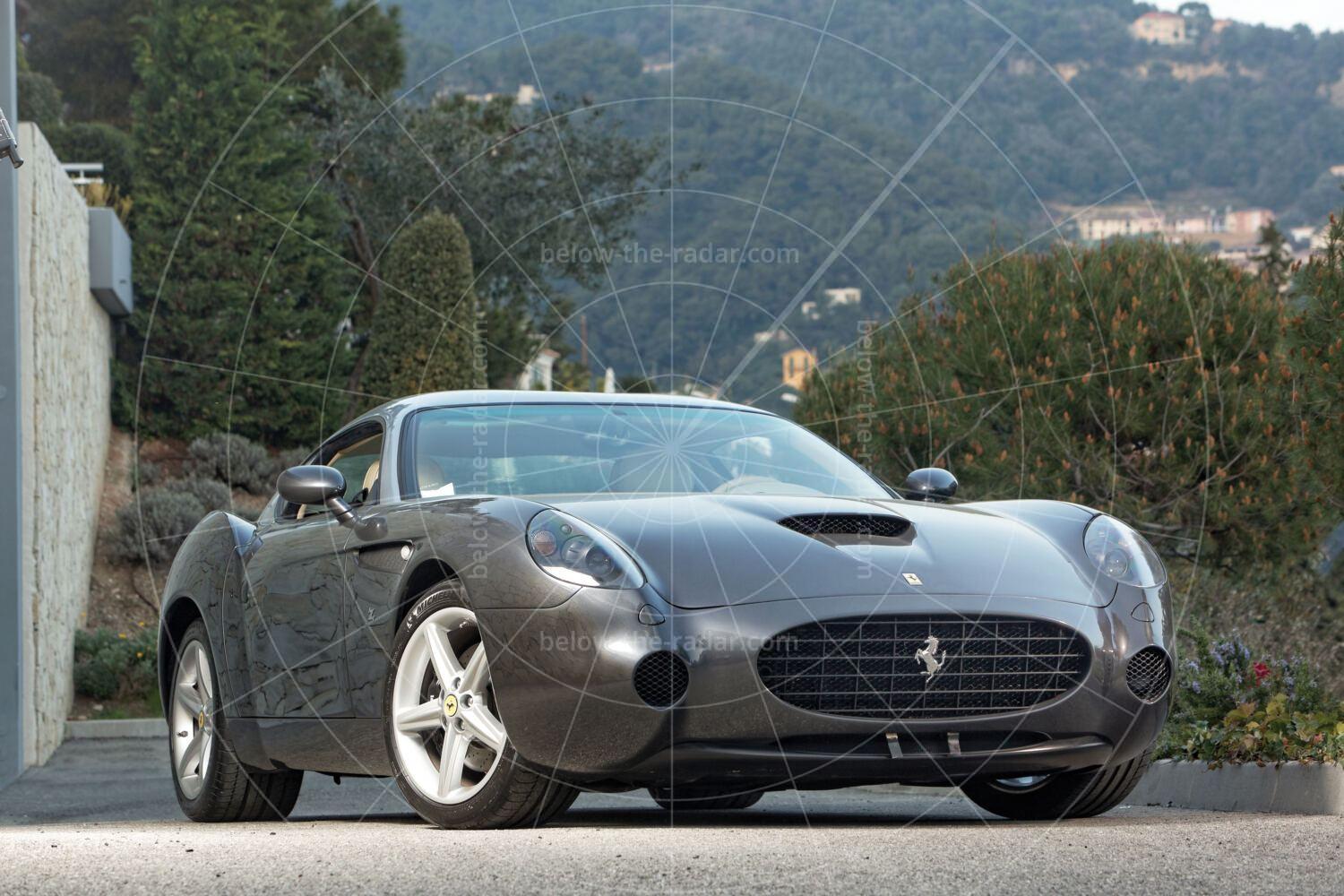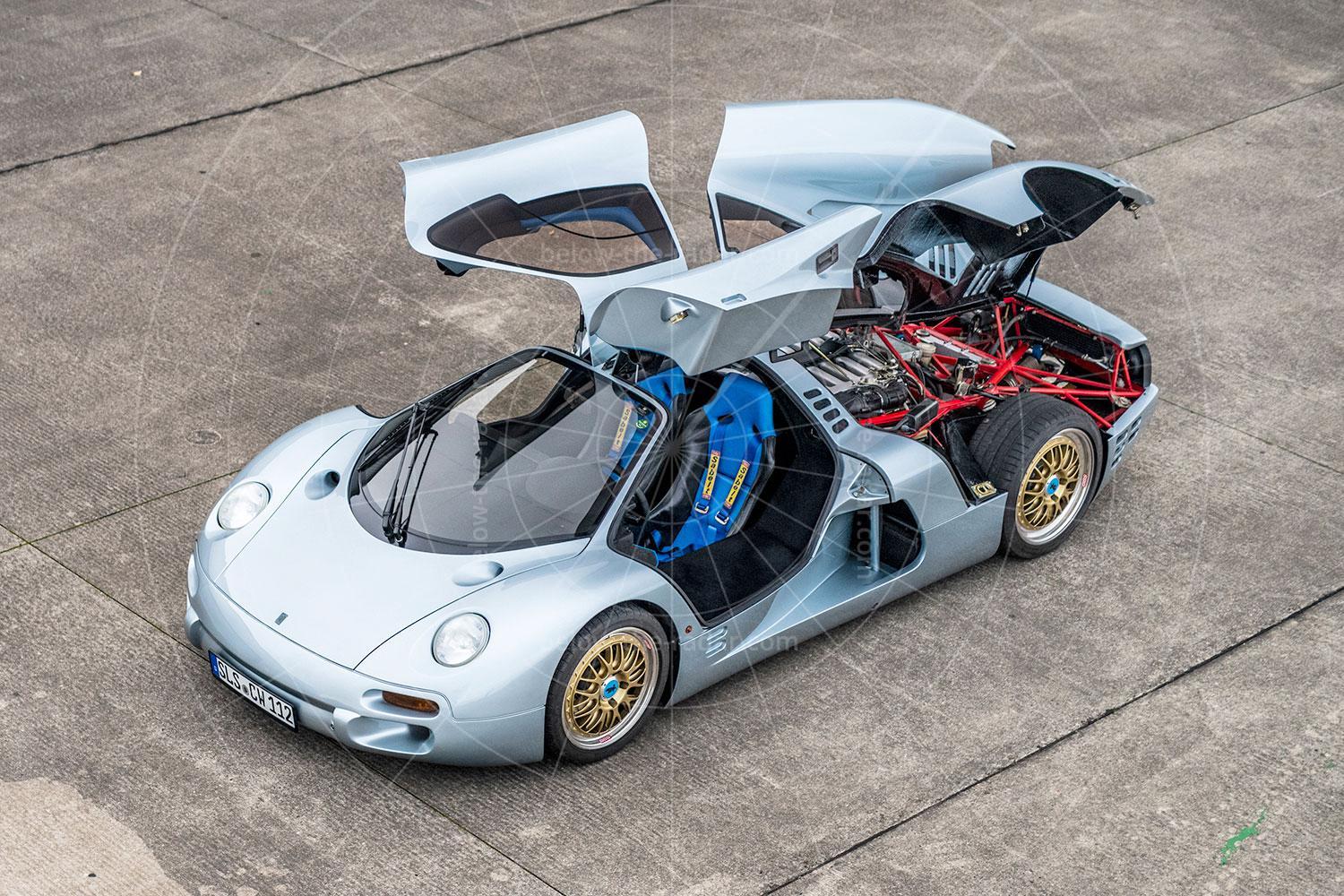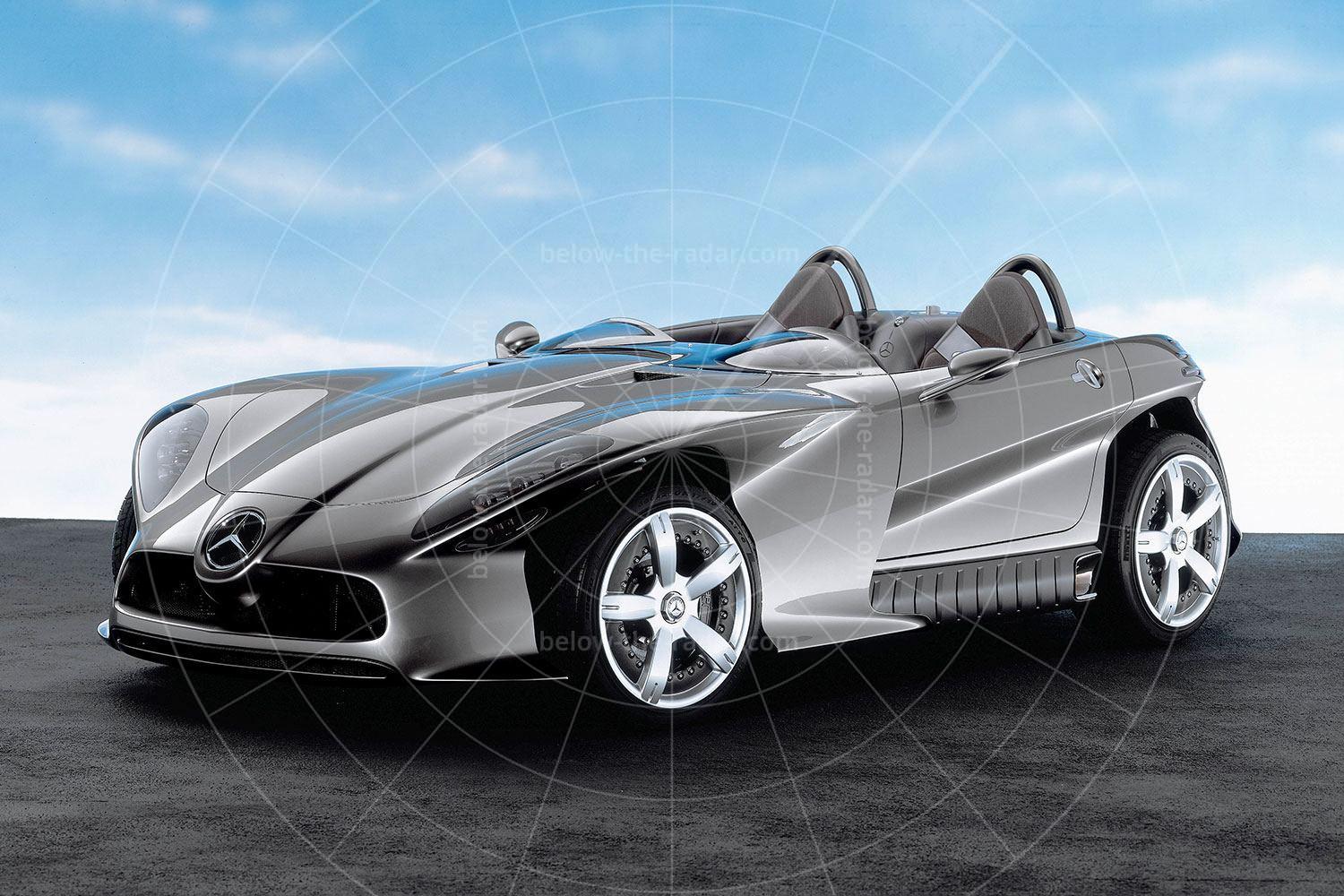It may seem a bit obscure initially, but there’s a big clue in the name of the GM Hy-Wire as to the technologies that it showcased: hydrogen fuel cell power and drive-by-wire electronics. Two of the most important technologies to enter the automotive field at the start of the 21st century, the Hy-Wire was GM’s attempt at showing that they could both be used in a practical, usable family car, even if there was no chance of the concept making it into production very soon after it made its debut at the 2003 Detroit motor show.
The Hy-Wire was a development of the Autonomy that General Motors had shown a year earlier; the latter concept was showcasing the technology, while the former one showed how it could all be packaged into a car that could actually be used from day to day. And to really drive the point home, this was no non-running show special; the Hy-Wire was capable of being driven just like any production car.
The reason for the importance of the hydrogen fuel cell part of the Hy-Wire was that this was the way forward for road cars when the concept was unveiled. Petrol and diesel engines were highly developed, but they polluted more than the fuel cell and hydrogen is also one of the Earth’s most abundant elements; fossil fuels were a finite resource that were also dwindling. The hydrogen-powered fuel cell stack, which was effectively the Hy-Wire’s engine, supplied electricity for the three-phase electric motor; running continuously it generated 126bhp, but was capable of peaking at 173bhp.
The drive-by-wire technology was just as important as the use of a fuel cell; if everything continued to be controlled by levers, pulleys and other mechanical actuators, no real progress could be made in terms of packaging, reductions in production costs or (to a degree) safety. But by introducing solenoids and cables to take care of the activation of controls such as brakes, clutch, steering and engine speed, there were all sorts of benefits to be realised.
By removing the conventional pedal box there would be more footwell space and in a collision there would consequently be less hardware in the cabin to cause injuries. The Hy-Wire could also be converted from left-hand drive to right-hand drive in just 10 seconds, with the steering ‘wheel’ moving electrically. Drive-by-wire also allowed easy tuning of components, so that the level of output achieved for any given input could be tailored to an individual driver’s requirements.
Inside the Hy-Wire there was space for five occupants with plenty of room left over for luggage, and to emphasise just how uncluttered the cabin was there was plenty of glass used in the construction. By using glazed units for the front and rear panels it was possible to see right through the car, while the lack of a B-pillar allowed it to be even more open. Even the backs of the seats featured window-like recesses, and because there was no engine in front, there was no need for a grille. Consequently the front of the Hy-Wire was also fitted with a glass panel, so the driver could see the road ahead – literally.
The key to the Hy-Wire’s potentially low production costs was the ‘skateboard’ construction of the main platform on which the concept was based. This was an 11-inch thick chassis which housed everything that was needed to make it go, stop and steer. The initial concept was fitted with a single motor that was located between the front wheels; the aim was for smaller motors to be fitted to each wheel to distribute the workload. Between the rear wheels was the fuel cell stack, while in the centre of the car there were three hydrogen tanks. To all this the bodyshell was bolted, which meant it wouldn’t be a problem offering several different bodystyles for any given model range.
| Vital statistics | |
|---|---|
| Debut | Detroit, 2003 |
| Engine | Rear-mounted fuel stack with 200 single fuel cells |
| Transmission | Front-wheel drive |
| Power | 173bhp |
| Top speed | 100mph approx |

